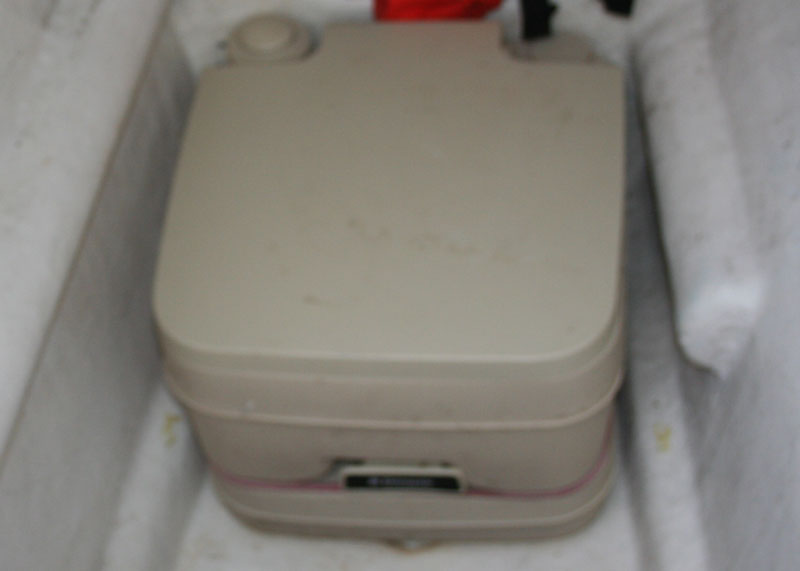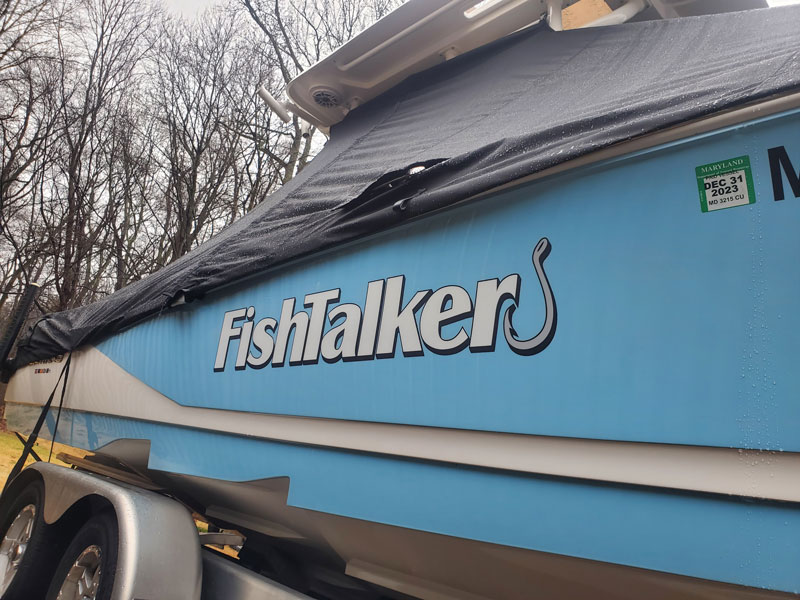Whether you do your fishing from a small Robalo R180 center console or a big, beefy Grady-White Canyon 386, it’s likely that as winter draws near you’re thinking about winterizing your boat. The best way to winterize a boat is, of course, to use it. Long unattended stretches and sitting idle for months on end is horrible for everything from outboards to electronics. But we do have to face the reality that prior to plummeting temperatures, some level of winterizing is a must to prevent severe damage. Just make sure you do it properly, because your efforts could do more harm than good if you stumble into one of these 10 boat winterizing disasters.

Bagging an Outboard
People sometimes get the smart idea to slide a plastic garbage bag overtop their outboard, to keep the rain and snow off. Except this idea isn’t smart in the least. While the plastic may keep water off the outside of the engine, condensation will form and become trapped under the plastic—thus moisturizing the powerhead for the entire winter. Bonus Disaster: The same goes when it comes to wrapping the prop and lower unit. In fact, this can be even worse if enough moisture collects to cause freeze-damage in the lower unit
Winterizing with the Drain Plug In
Launching a boat without putting in the drain plug may be embarrassing, but winterizing a boat without removing those plugs can be catastrophic. If your cover leaks (you did put a cover on the boat… right?) and the bilge fills up with water and then freezes, it can destroy everything from bilge pumps to bulkheads.
Leaving a MSD on the Boat
If you have a portable MSD onboard, make 1000-percent sure you remove it from the boat entirely. If you have a fixed head, be 1000-percent sure to pump the tank clean. Otherwise, the disaster you’ll face goes well beyond the norm. Instead of merely dealing with the damage after a fitting or a hose freezes and bursts, there will be a clean-up duty you’ll remember for years to come.

Using a Tarp to Cover a Boat
Those blue tarps may be cheap, but they can also do severe damage to a boat’s gel coat, teak and brightwork, and the paint job on an outboard. That checkerboard-pattern of filaments you can feel on those tarps is ever-so-slightly abrasive, and if a tarp isn’t secured well enough it may shift back and forth in the breeze for days on end. If you haven’t covered the part of the boat being subjected to this abuse with an added layer of protection (such as wrapping the outboard cowl or a teak rail with a towel or an old bedsheet), eventually, that tarp can wear away the very finish you were trying to preserve
Parking the Boat on a Downward Incline
When a boat is spending the winter on a trailer, no matter how level the parking spot may or may not be, make sure the bow is elevated. Otherwise the boat won’t drain properly. Water gets in, it can’t get out, and… well, you know the rest of this story.

Boat Cover Supports Contacting Seats
If you’re using straps to help support a winter cover, check to make sure they don’t touch any of your boat’s vinyl-covered seats—and be especially sure no metal buckles are touching. These straps will be under tension, and if it snows on the cover, that tension increases. The areas where a strap compresses the seat’s vinyl and the foam beneath it can leave an imprint behind, causing permanent damage.
Leaving an Outboard Tilted Up
Outboard engines are designed to drain completely when tilted to the down position. Leaving an outboard tilted up through the winter months is asking for trouble, not only because you can’t be sure the cooling system has completely drained, but also because rainwater can fill parts of the lower unit. As we mentioned earlier, wrapping a plastic bag around it to keep the water out will create a disaster of its own—so make darn sure that engine is tilted all the way down.
Water Pooling on the Boat Cover
Having a cover that allows water to pool can be worse than having no cover at all. The reason? Water weighs a ton. If the cover rests on a windshield frame, a few hundred pooling pounds can crush it. Same goes for grab rails on a console, mounts on a T-top, and in extreme cases, even the T-top itself.

Using a Lightbulb for Heat
Once upon a time it was considered acceptable to leave a bare light bulb hanging from an extension cord in the bilge, to add some warmth and prevent freeze damage on boats left in the water. Well, those days are over—thanks to this trick, enough boats have burned to the waterline that some insurance companies explicitly prohibit this practice on boats they cover. Instead, get a dedicated bilge heater.
Failing to Vent a Boat Cover
Tightly covering a boat seems like a great idea, but if you don’t add sufficient venting, it can be a complete disaster. As the sun comes up every day condensation will form, and in no time flat mildew will begin a full frontal assault on your boat’s cushions, curtains, and carpet.
Our best and most important winterizing advice? Whenever and wherever possible, instead of letting it sit unattended, use that boat!
Editor's note: This article was originally published in November of 2017 and was last updated in December of 2024.